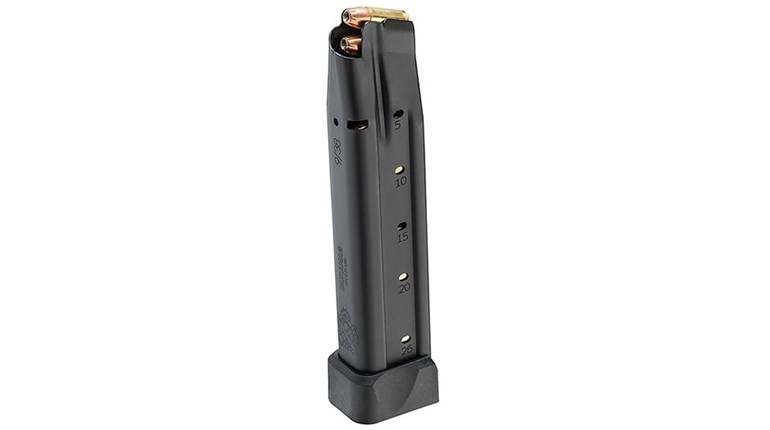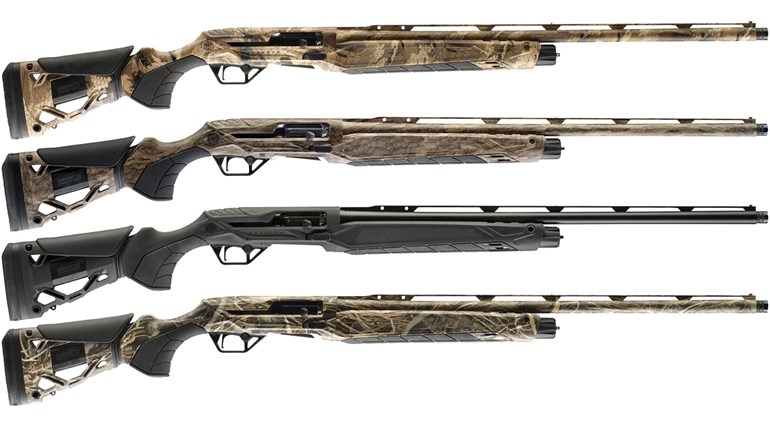
My uncle passed away and left me and my brother his semi-automatic-pistol collection along with a lot of equipment and accessories that go with them. In addition to the paraphernalia were two big boxes of pistol magazines. Some were new, and some were well worn to the point that they had little finish left on them.
Our dilemma is trying to determine what magazines go with what guns, and whether the previously used magazines could be salvaged. Is there a function check or inspection procedure that could be followed to determine the serviceability of the magazines we have?
Ben and Paul Ertzinger, via e-mail
The first thing I would do is to separate all of the magazines by brand and caliber. Many factory magazines, even if they are not in their original packaging, have the brand and model of the pistol they are designed for and the caliber of ammunition they are designed to shoot marked where it is readily visible.
You might go further by separating the double-column magazines of each brand from the single-column ones of the same brand. At this point, a direct visual comparison of the unknown magazines to the known ones will help in the sorting and matching process. Aftermarket magazines may or may not have signifying markings as to what gun or guns they are suited for. When visually comparing magazines, there are a few key points to identify and give some attention to.
The overall size of the magazine body in width and length is an initial indicator as to which pistol’s magazine well will accommodate that magazine. It should enter the well smoothly while occupying all of the available space, and it should drop free of its own weight when unrestricted by the magazine catch/release. There are exceptions of which you need to be aware, such as the early generation Glock magazines that were designed to be retained in the pistol for a tactical application during military operations.
The magazine-catch slot cut into the magazine tube/body—which engages the magazine catch to hold the magazine in position—must be positioned so its interlock ensures the magazine will not spontaneously fall out of the magazine well. Therefore, it is important to take note that some magazines are very similar in fit and appearance, but the location of the magazine-catch slot precludes the use in one brand of pistol, whereas they will work perfectly in another brand.
At the top of the magazine are two parallel surfaces, referred to as feed lips, that hold the ammunition in the magazine once loaded. They also guide the ammo out of the magazine as the slide moves forward to strip the top round from the magazine, pushing it up the feed ramp and into the chamber readying the gun for firing.
Obviously, the opening between the feed lips determines the caliber of the cartridge for which the magazine is designed. The greater the distance between the feed lips, the larger in diameter of the cartridge the magazine.
The base plates of many magazines are essentially covers on the bottom of the magazine body to hold the spring-loaded components of the magazine in place. This is an area that is often overlooked when one is making comparisons between magazines. Subtle differences in shape and contour of the base plate can mean the difference between a magazine that fits and one that does not.
A magazine inspection and function check will often transition an unknown magazine into a working member of the magazines associated with a particular pistol. The process is fairly straightforward and can be done in moments.
If the magazine is dirty or exhibits rust, it should be disassembled, cleaned and have the metal surfaces treated with a non-transferrable surface protectant to prevent future superficial damage without the danger of contaminating the ammo housed by the magazine.
A visual inspection for cracks, dents, broken welds or other irregularities in each component should follow before reassembly, with any parts deemed substandard replaced at that time. Once reassembled, it, should be fully inserted into the magazine well of the pistol in which it will be used, ensuring interlock with the magazine catch by pulling on the base plate.
With the magazine seated securely, pull the slide fully to the rear to ensure that the empty magazine will lock the slide open. This is a way of testing magazine spring viability as well. If the slide locks open after the last shot is fired, the magazine spring should be considered as good.
Once the unknown magazine is found to fit and function as described, the final test would be to load the magazine to maximum capacity and fire it through the last shot. Any magazines that do not meet these recommended parameters can be stored for future investigation. Separate the new magazines in each group from those that show use.





































